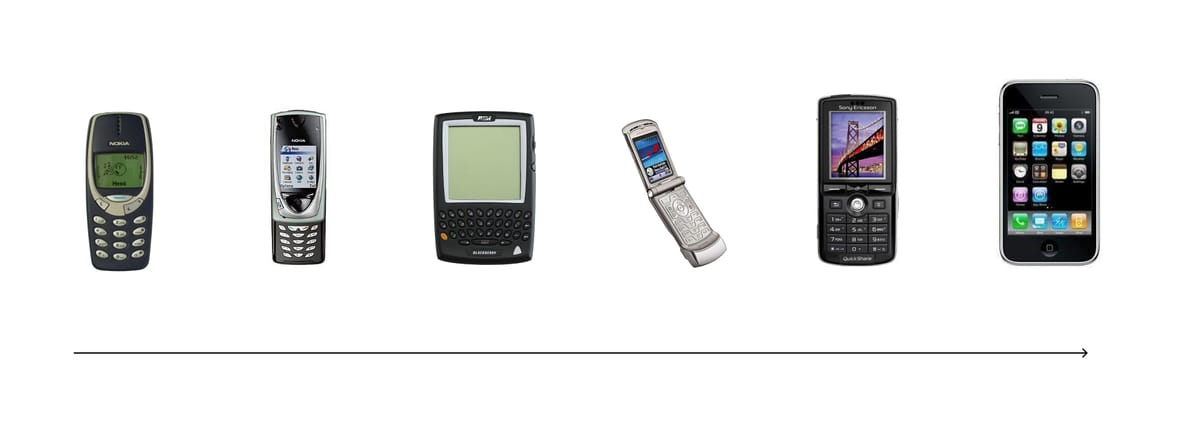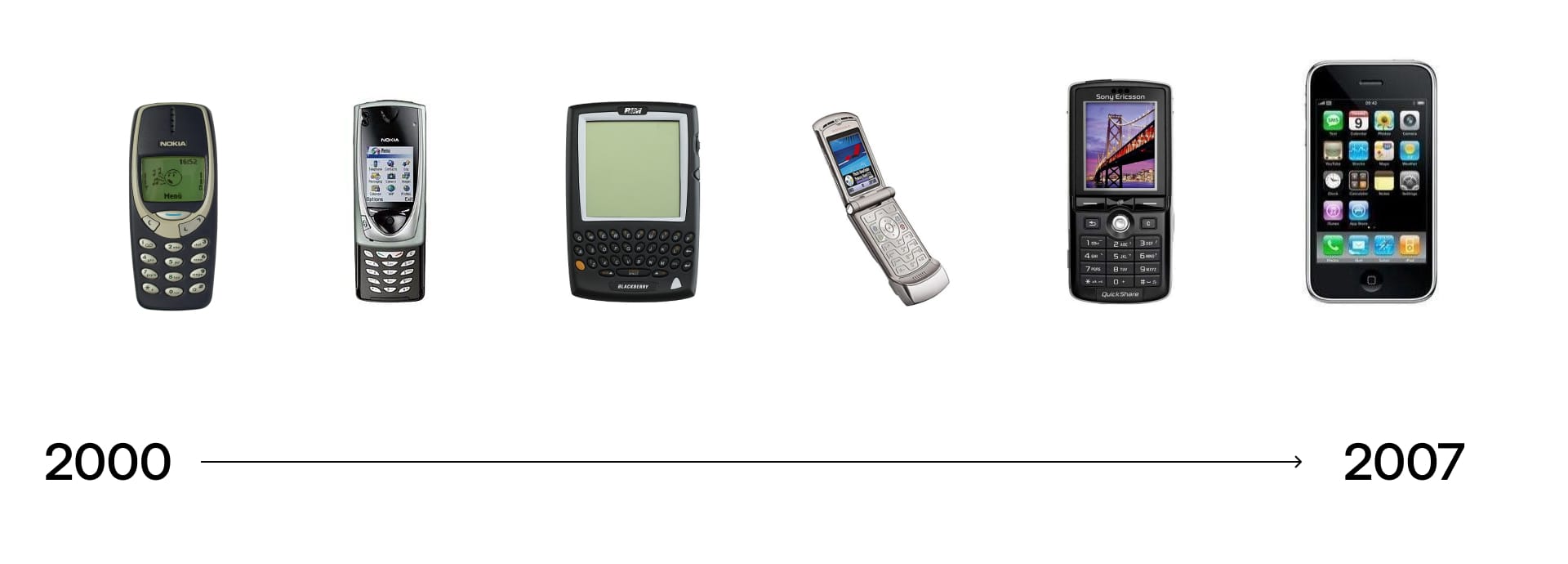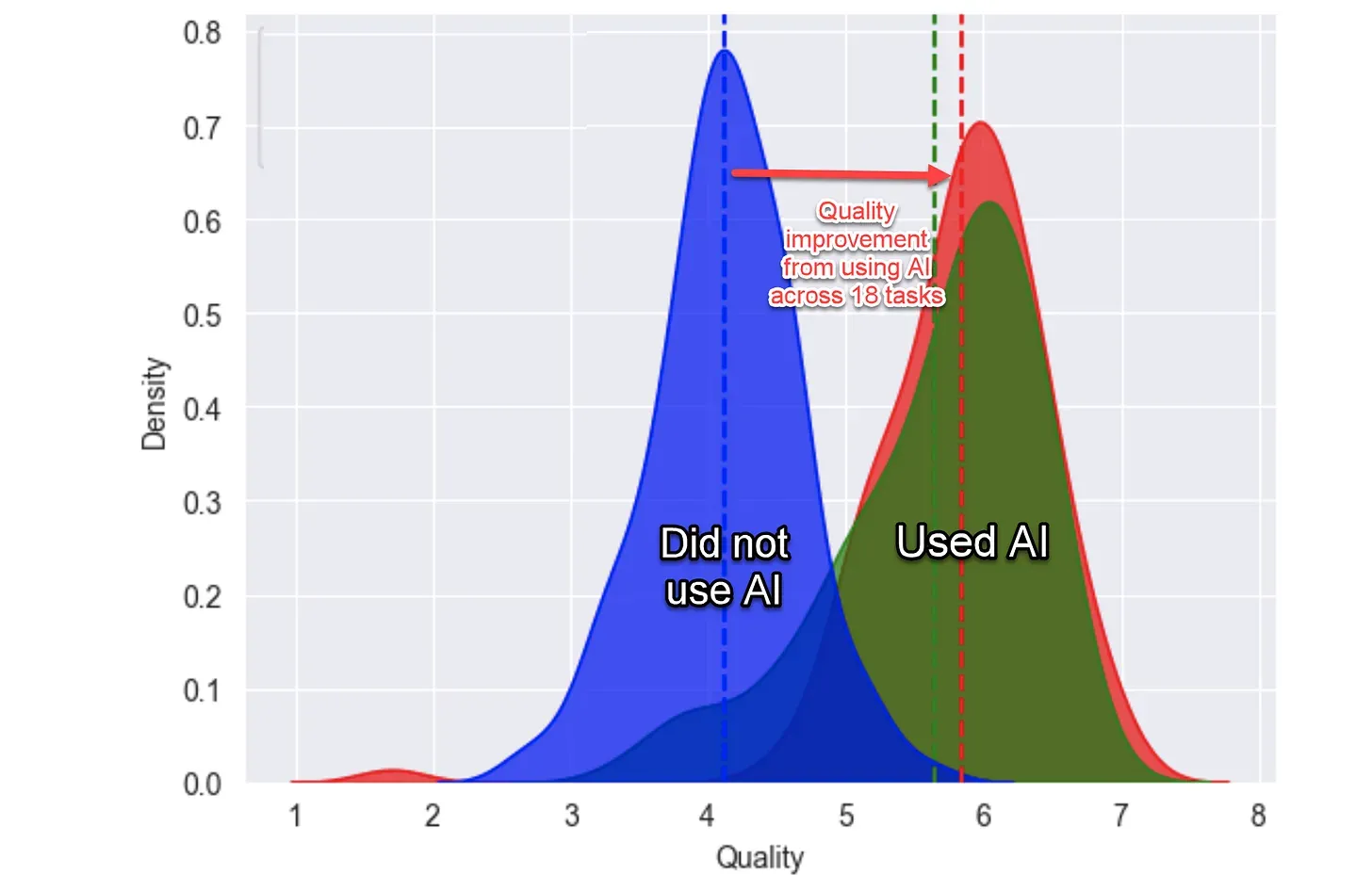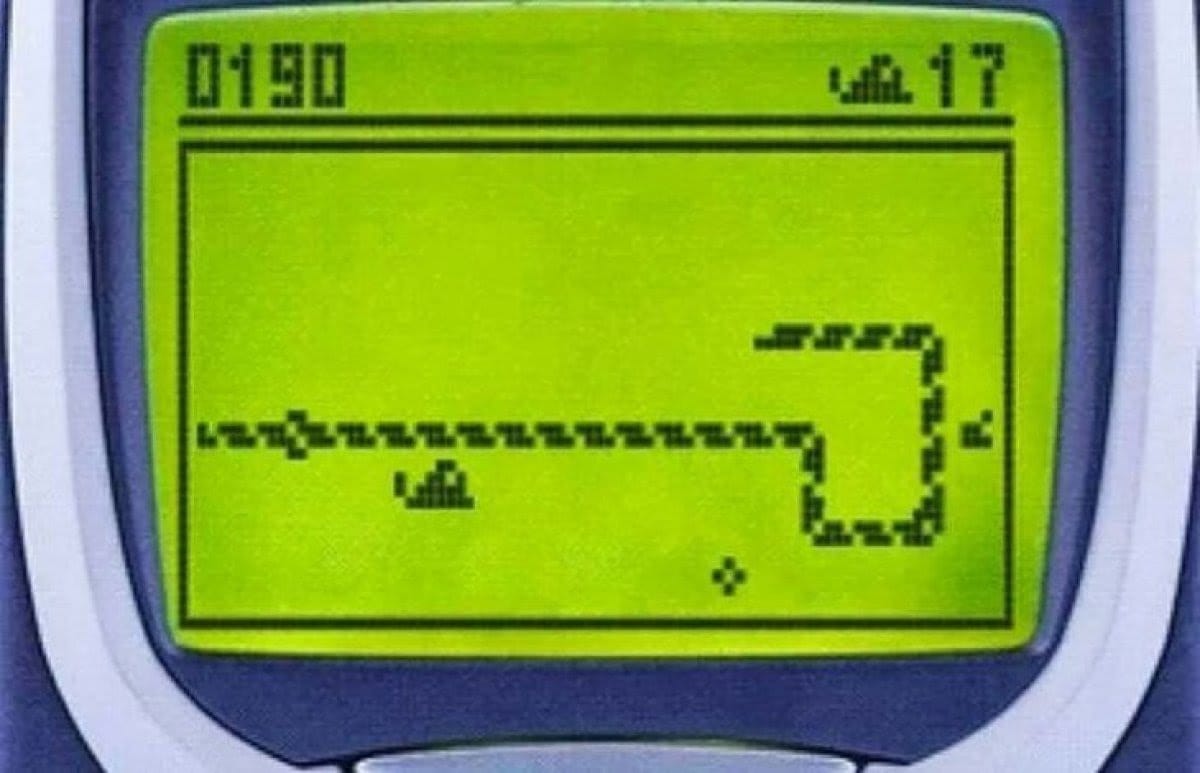Today’s A.I. is a Nokia 3310. And the iPhones are coming.
Why artificial intelligence will follow the mobile phone industry’s five chapters of evolution - and the one simple prompt that’s key to unlocking progress.

Seventeen years ago this week, Steve Jobs took the stage at the annual Macworld conference and introduced the first iPhone to the world.
The launch edition came with a multi-touch interface, a web browser that actually worked, and instant access to both music (via an inbuilt iPod), and video (through a native YouTube app).
Within 18 months, all iPhones included GPS, motion detection, an accelerometer, and a video camera.

Yet the biggest breakthrough of that early period wasn’t a feature, but a tertiary service.
‘Appy Campers
The App Store marketplace sparked not just a surge of innovation, but an entirely new economy. Developers across the globe were empowered to build and release their own products to a worldwide audience. Within a month of launch, the App Store was throwing off $1m a day. In just a matter of months, a whole host of new products, services, and businesses were created around this fledgling ecosystem.
In the five years that followed the iPhone’s launch, the global smartphone market grew 500%. By 2021, the App Store alone generated gross annual revenues in excess of $80bn.
Today, we take the iPhone’s innovations for granted. Our smartphones give us instant access to video calls, banking, global navigation, podcast production, dating, and hundreds more possibilities. All of this is seamlessly integrated into a pocket-sized device - much of it quietly driven by the App Store.
As Arthur C. Clarke famously said,
“Any sufficiently advanced technology is indistinguishable from magic”.
When it comes to Artificial Intelligence, we’re currently in the early stages of a similar story - one of breakthroughs, magic, new economies… and crashes.
To help us better understand what’s coming next in A.I., we can follow the telecoms trail back in time - seven years before the iPhone’s debut.
Mind the Gap
When you think of a Nokia 3310, your mind may go to ‘snake’ - the cult game that came preloaded with every device. But the 3310 offered plenty more beyond the pixelated python. It had a built-in chat function, a calculator, and a stopwatch. The handset was virtually indestructible. Its battery lasted for eons. You could even personalize the cover. In the year 2000, all this wasn’t just novel. It felt extraordinary.
Nokia thought they'd maybe sell 20m of them. Instead, that figure reached 126m. The stage was set for an explosion of innovation.
But the 3310 turned out to be the last truly iconic mobile phone product until the iPhone.
What happened in the intervening seven years?
It wasn't like the early 2000s were a black hole for innovation. BlackBerry’s 5810 brought email to a mobile device. Motorola’s RAZR was unusually sleek and svelte. Sony built a high-fidelity camera into their K750.

But the dot-com bubble burst in March 2000 caused a long-lasting shockwave. Innovations were largely - per Geoffrey Moore’s seminal book ‘Crossing the Chasm’ - continuous rather than discontinuous. Most new releases were feature-driven: either integrating two previously separate elements (phone + email); or optimising a component or design (a camera, or the flip mechanism).
While these feats weren’t to be sniffed at, and the overall market managed to keep growing in the years after the dotcom crash, consumers’ overall experience didn’t actually evolve all that much.
Looking at those seven years in retrospect, we could think of them as having five chapters:
- Huge growth as new technology comes online (3310, cloud-based telecoms)
- A bubble pops/deflates, in part due to macro economic disruption (dotcom and telecom bubbles)
- Compelling B2B use cases become a key growth area (Blackberry)
- Consumer-focused innovation is driven by feature optimization and aesthetics (RAZR, K750)
- A fundamental evolution in format leads to massive second and third order effects (iPhone, App Store)
Viva La Revolucion
These five chapters align closely with researcher Carlotta Perez’s work on the cycle of new technological revolutions. Here’s how Tom Critchlow described Perez’s insights in his 2014(!) post predicting a 2025 Global Economic Crash:
First comes the rapid growth as new technological infrastructure is put in place. This phase is funded by financial capital derived from speculation. This phase is called the Installation Period.
This frenzy ultimately leads to a crash as the bubble bursts.
Then starts the real growth and “golden age” as the infrastructure built in the installation period becomes cheaper, more accessible and more universal. This phase is funded by production capital derived from profits and is called the Deployment Period.
This diagram sums up the installation and deployment periods well:
Pretty cool. Let’s overlay my five-chapter version via a Howard rough-cut remix (designers, look away now):
We can also zoom out. Perez also laid out five major technological revolutions from history that all fit the model:
I believe A.I. will follow a very similar pattern. And yes, that means a crash.
The Great Unfolding
Yesterday I got chatting with a lawyer. He told me about a meeting he'd had the previous week. Him and some colleagues were discussing A.I.'s implications - for both their firm and the legal profession as a whole. After a while, he realised something didn't feel right. They were having seven different conversations: everyone talking across each other with drastically different definitions, use cases, goals, and expertise.
This story is a good analog of where we are right now.
Is A.I. a chatbot, a dream machine, a fad, a factory, or an assistant? Is it exciting, dangerous, or just another part of progress? The answer to all of the above is…Yes.
Going back to our five chapters, at the time of writing we’re probably 70-80% of the way through Chapter 1. Now is as good a time as any for us to avoid having those problems the lawyers faced. We need to have more productive conversations; to develop a shared understanding; to start building some kind of picture of what this even is.
A number of people believe we’re in an A.I. bubble of some kind. To a large extent I agree. If not a full-blown crash, I expect some kind of restructuring period before we rapidly enter Chapter 3. The likely speed of this phase is why it’s so important to equip ourselves now with greater knowledge, language, understanding, and perspective. And this should not only focus on the technology itself - it should be focused on human skills, human dynamics, human challenges.
As DeepMind co-founder Mustafa Suleyman notes in his new book 'The Coming Wave':
“Technology is the best and worst of us. There isn’t a neat one-sided approach that does it justice. The only coherent approach to technology is to see both sides at the same time.”
After the crash period, Chapter 3 will mark the golden era for B2B. This is where business use cases become much clearer and seriously ramp up. Calling back our 2000-2007 telecoms timeline, perhaps you recall how many businesses both large and small equipped their people with Blackberries in the mid-late 2000s (Blackberry’s parent company RM had over 85m subscribers at its peak). Picture this, but with an impact 10, 20, maybe 100x greater.
During this time there will still be plenty of B2C offerings, and while many will feel hugely exciting they’ll be like the RAZR and K750 - kinda cool, but rarely vital. This is Chapter 4. A bunch of products will probably come and go in quick succession.
While hard to predict exactly, I expect Chapters 2, 3 and 4 to be fairly compressed - perhaps 2-3 years from the end of the initial crash/correction through to the early parts of Chapter 4. This will in part be thanks to the Law of Accelerating Returns, as coined by futurist Ray Kurzweil (tl;dr: things are changing faster than they've ever changed before).
And then, at some point, we’ll reach Chapter 5.
But what does that look like?
A single prompt
At this point it’s worth us going back to the iPhone one more time. What made it a true game-changer?
Apple’s masterful marketing was undoubtedly a contributor, as were the features, the App Store, and all the rest. However, the real driver was a fundamental shift in format - in the entire concept of what this even was. It’s not difficult to imagine the Apple team asking themselves,
‘what is this?'
What they came up with was not a telephone with added features. It was, as Jobs said, “a computer in your pocket”. A full-fledged handheld computer, designed to be highly interoperable, accessible and intuitive.
That simple (yet very challenging) question of ‘what is this?’ is the key to Chapter 5, but it also needs to be front of mind throughout the rest of the journey.
Because throughout Chapters 2-4 - and even more so right now in Chapter 1 - it’s very a difficult question to answer. No one truly knows. And frankly, anyone who believes they have the answer - probably doesn’t. Even Steve Jobs didn’t know how impactful the iPhone would become.
Chapter 5 is when a novel and compelling answer to ‘What is this?’ will surface.
This is where the fundamental format shift occurs. It could be a glasses product in the vein of Meta’s Ray-Bans or Apple’s Vision Pro. Perhaps it’s an implant. It might be a ‘regular’ phone or laptop, but with a completely different approach to interaction.
It’s also likely the point where we’ll become more like what Ethan Mollick thinks of as Cyborgs vs. Centaurs: deeply integrating machine/AI and human, vs. a strategic division of labor where we switch between AI and human tasks.

Elements of a breakthrough
All this lives somewhere in the Adjacent Possible. This means it's pretty difficult to visualize exactly what it might look like. To help see a little more clearly, let's set aside the format for a moment and ask what properties this might have. Again, we can look at the shift the iPhone instigated. Some of its elements included:
- Concept shift: A fundamental evolution in concept vs. an iterated version of an incumbent product
- Feature dissolution: Feature-driven benefits (geolocation back then, or today’s ‘AI Assistant’) will dissolve into the UI
- Augmentation: Human abilities are augmented in completely new ways (Cyborg vs. Centaur)
- Human-centered design: Highly intuitive - can be used by 8 year olds and 80 year olds; irrespective of background, geography, skill set, etc.
- Ecosystem focus: Inclusion of tertiary services (App Store)
These are just a few of the 'whats' - I’m sure there are many others.
But what about the ‘when’?
Moment... or Mirage
On the face of it, it look like we’re already here.
OpenAI recently announced their GPT Store, a marketplace where paid ChatGPT users can buy and sell specialized chatbot agents based on the company’s language models.
Given OpenAI’s user base, this might just be an App Store moment. We'll see.
How about the iPhone moment…?
A number of companies are currently racing to gain mass market adoption of hardware devices. Humane is one, Rabbit is another. These products are fascinating, but to drive a true conceptual shift they need to ride out Carlotta Perez's curve from Installation to Deployment. They need to cross the chasm between early adopters and majority audiences. And many companies before them have fallen into the abyss. It won't be easy.
So, assuming we're not there yet - when? Chapter 5’s arrival might match the 7 year gap between the 3310 and the iPhone. Per Perez’s model, the conceptual shift that occurs in the deployment phase could take as long as 30 years. Perhaps - given the law of accelerating returns (along with this excellent piece on A.I. acceleration) - it’ll be more like 3 years… or it might even be 1.
Right now it’s very hard to say.
But make no mistake, the A.I. era’s iPhone moment is coming.
Snakes & Ladders
Today, I firmly believe we’re still in Chapter 1.
We have our 3310s in our pockets, happily playing a game of snake, topping up our pay-as-you-go credits, swapping out some custom artwork. We’re marveling at the magic, yet fidgety at its limitations. Excited at possibilities, but struggling to clearly see what’s on the horizon.

Chapter 5 is rapidly approaching, probably faster than you think. And it could create even more of a seismic shift than the iPhone was back in 2007 - because not only do things now happen faster, they happen bigger.
One final thought.
You can survive perfectly well without a smartphone. Even today.
But once you have one, it’s very, very difficult to imagine life without it.
It’ll be the same with A.I. You won’t need it. You won’t need to understand it, nor even care about it if you don’t want to. Many people who choose to go this way will be just fine.
But at some point - once you have one in your pocket (or your eye, brain, or wherever else) - it’ll be very, very difficult to imagine life without it.
Thanks to Tom Critchlow, Will Abramson and Conor McCarthy for reviewing drafts of this piece.
P.S. To illustrate how quickly this area is evolving, I thought I’d finished this piece four days before publishing. Then, over the next 48 hours, both Rabbit and the GPT Store were announced...